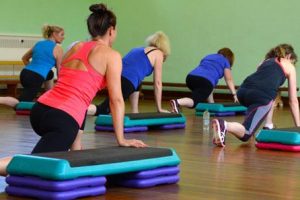Stability and coordination are fundamental components of overall fitness. A strong, stable core serves as the foundation for these attributes, impacting everything from daily activities to athletic performance. Core balance training, which focuses on improving the strength and stability of your core muscles, is essential for achieving optimal fitness. In this comprehensive article, we will delve deep into the world of core balance training, exploring its importance, benefits, various exercises, and how to incorporate them into your fitness routine.
Understanding the Core
Before we dive into core balance training, let’s clarify what the “core” actually encompasses. The core is more than just your six-pack muscles; it includes a complex group of muscles that provide stability and support to your spine, pelvis, and trunk. These muscles can be categorized into two main groups:
- Local Stabilizers: These deep muscles, such as the transverse abdominis and multifidus, help control the orientation of individual spinal segments.
- Global Mobilizers: These superficial muscles, like the rectus abdominis and obliques, are responsible for generating movement and power.
The Importance of Core Stability and Coordination
Core stability and coordination are vital for various aspects of life and physical activity:
- Posture: A strong core promotes proper alignment, reducing the risk of poor posture and associated discomfort.
- Injury Prevention: Enhanced core stability can reduce the risk of injuries, particularly in the lower back.
- Functional Movement: Everyday tasks, such as lifting, bending, and twisting, depend on a stable core.
- Athletic Performance: Improved core stability can lead to better performance in sports and other physical activities.
- Balance and Coordination: Core strength and control are essential for maintaining balance and coordination.
Benefits of Core Balance Training
- Improved Posture: Core balance training helps maintain an upright posture by strengthening the muscles responsible for spinal support.
- Reduced Risk of Back Pain: A strong core can alleviate stress on the lower back, reducing the likelihood of back pain.
- Enhanced Athletic Performance: Athletes benefit from improved stability and coordination, which can translate into better agility and power.
- Injury Prevention: Strengthening the core minimizes the risk of injury by stabilizing the spine and pelvis.
- Enhanced Balance and Coordination: Core balance training sharpens balance and coordination skills, improving overall functional fitness.
Core Balance Training Exercises
- Plank: The plank is a classic core exercise that involves holding a push-up position with your arms extended beneath your shoulders. It engages the entire core, including the rectus abdominis, obliques, and lower back muscles.
- Leg Raises: Leg raises target the lower abs. Lie on your back and lift your legs off the ground, keeping them straight. Lower them back down without touching the floor.
- Russian Twists: Sit on the floor with your knees bent and feet off the ground. Hold a weight or medicine ball and twist your torso from side to side.
- Superman: Lie face down and lift your arms and legs off the ground simultaneously, engaging the erector spinae and glutes.
- Bridges: Lie on your back with your knees bent and feet flat on the floor. Lift your hips towards the ceiling, engaging the glutes and lower back.
- Bird-Dog: Start on your hands and knees. Extend one arm and the opposite leg while keeping your balance. This exercise improves coordination and stability.
- Pallof Press: Attach a resistance band to a stable anchor and stand perpendicular to it. Hold the band close to your chest and extend your arms forward, resisting the pull of the band. This exercise targets the obliques and helps improve anti-rotational stability.
- Dead Bug: Lie on your back with your arms extended toward the ceiling and your knees lifted at a 90-degree angle. Lower one arm and the opposite leg simultaneously, keeping your lower back pressed into the floor.
- Windshield Wipers: Lie on your back with your arms extended to the sides. Lift your legs and rotate them from side to side, engaging your obliques.
- Stability Ball Rollouts: Kneel on the floor and place your hands on a stability ball. Roll the ball forward while maintaining a straight line from head to knees. This exercise challenges your core stability.
Incorporating Core Balance Training into Your Routine
To effectively integrate core balance training into your fitness routine, consider the following tips:
- Frequency: Aim for 2-3 core workouts per week, allowing your muscles to recover between sessions.
- Progression: As you become more proficient, increase the intensity, duration, or resistance of your core exercises.
- Variety: Rotate between different core exercises to target all core muscle groups and prevent plateaus.
- Balanced Routine: Combine core balance training with cardiovascular exercise and strength training for a well-rounded fitness regimen.
- Proper Form: Maintain proper form during exercises to maximize their effectiveness and prevent injury.
- Consult a Professional: If you’re unsure about which exercises are best for your needs or have a history of back issues, consider seeking guidance from a fitness professional.
Conclusion
Core balance training is an integral component of any fitness program. A strong and stable core not only improves posture and reduces the risk of back pain but also enhances athletic performance and overall functional fitness. By regularly incorporating a variety of core exercises into your routine, you can reap the numerous benefits and enjoy a more stable and coordinated lifestyle. So, strengthen your core, and in turn, enhance your quality of life.





Add Comment